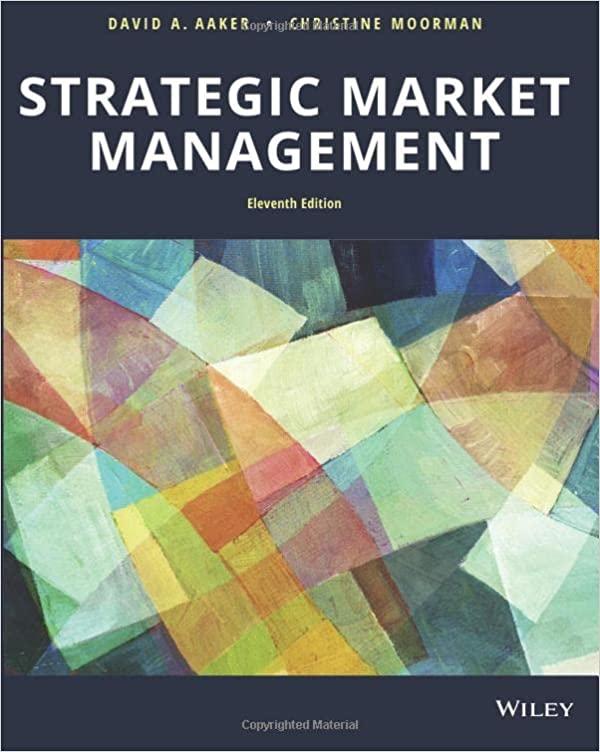Itai was founded as a family business in 1945 as Banco Central de Crdito S.A. In 2008,
Question:
Itai was founded as a family business in 1945 as Banco Central de Crédito S.A. In 2008, Itai merged with Unibanco (founded in 1924, also as a family business) with the goal “to be the leading bank in sustainable performance and customer satisfaction.” By 2016, Itai Unibanco reached US $65.2 billion in market cap, with stocks on the NYSE. Itai Unibanco is the largest privately owned financial conglomerate in Latin America and is among the largest banks by market cap in the world after acquiring a series of local and international banks over the years. Interbrand recognized Itai Unibanco as the most valuable brand in Brazil 13 consecutive times between 2004 and 2016.
How did Itai Unibanco achieve this status? One foundational reason is a strong focus on customer satisfaction and how to achieve it. Beginning in 2003, Itai recognized that customers wanted secure, fast, and convenient banking and that technology was needed to deliver it. The bank introduced usability methods to get closer to the customer and to understand how to improve the banking experience. This involved observing customers actually using banking technologies and gathering customer feedback during the process. Although development cycle times were long, the strategy worked and by 2009 the company secured its leadership position in Internet banking as evidenced in customer satisfaction scores.
However, Itai Unibanco foresaw the online space becoming even more important—digital transactions grew from 26 percent in 2008 to 38 percent in 2010 while traditional physical transactions decreased from 74 to 62 percent in the same period. Aware of the demands from digital customers, Ricardo Guerra, head of Digital Channels, convinced the Board to invest in 200+ new employees who would understand the entire design cycle—from customer experience to technology design. These included anthropologists and sociologists who go into the field to generate customer insights and segment customers based on their behaviors, designers who come up with solutions focused on known and unknown customer needs, and technologists who were willing to participate in building solutions and improving them over time.
Progress was made, but as Ricardo Guerra shared, “We were still working for the bank and its stockholders. We needed to do what was best for customers, which is, in the end, best for the bank.” The bank made even bigger commitments to the digital transformation. First, it defined six areas the company should emphasize—technology, user experience, innovation, communication, CRM, and business financial performance. Ricardo Guerra noted that the company had to focus on “reading customer behavior to drive solutions.” Second, it focused on three key. methods—design thinking, customer-centric design, and agile development. Third, it defined shared goals for IT and the banking lines of business (involving products and services), to ensure these groups were not working in silos but collaborating in selecting and managing technologies to enable new business opportunities and advance performance metrics. Although top-notch programmers might leave the company because they wanted to be insulated from business pressures, leaders knew the risk was worth taking to set appropriate culture and behavior in the company.
Fourth, the bank made several structural changes. It moved from a product-based structure to one that focused on the customer segments’ experiences, such as the one dedicated to high-income customers, Itai Personnalité. This change re-directed employees’ attention to the customer (not on the products and services). Finally, leaders did not dictate how goals should be achieved. Instead, they empowered people to make more decisions. They flattened the organization, effectively putting business and technology leaders in direct contact with teams ona weekly basis. Using an approach that mimics meetings between startup owners and venture capitalists, teams update leaders on project results, share challenges and propose next steps to test solution hypotheses with customers. This approach allows the company to cut through layers of bureaucracy, get to customer solutions faster, foster cohesive teams, and generate trust among people across different levels and divisions.............
Questions:
1, What organizational factors were important to Itai’ Unibanco’s digital transformation?
2. What growth opportunities do you envision for Itati Unibanco and what is the best organizational approach to develop and implement these growth strategies?
Step by Step Answer:

Strategic Market Management
ISBN: 9781119441434
11th Edition
Authors: David A. Aaker, Christine Moorman





